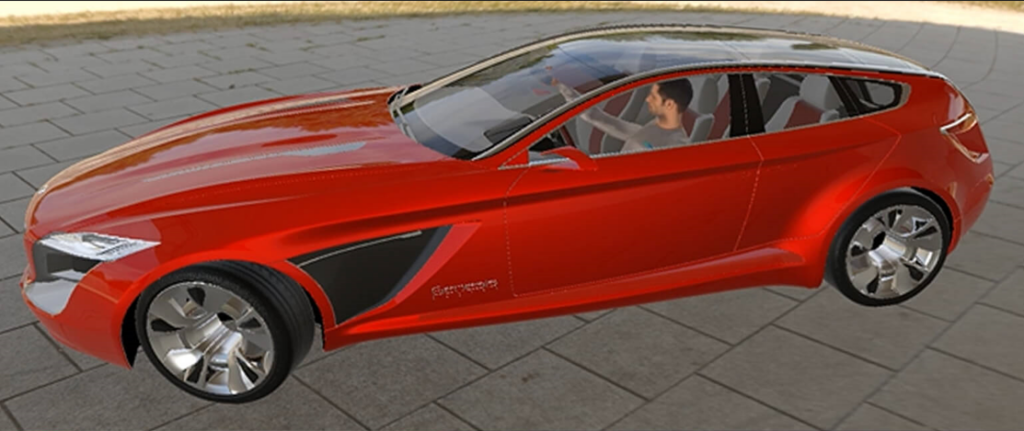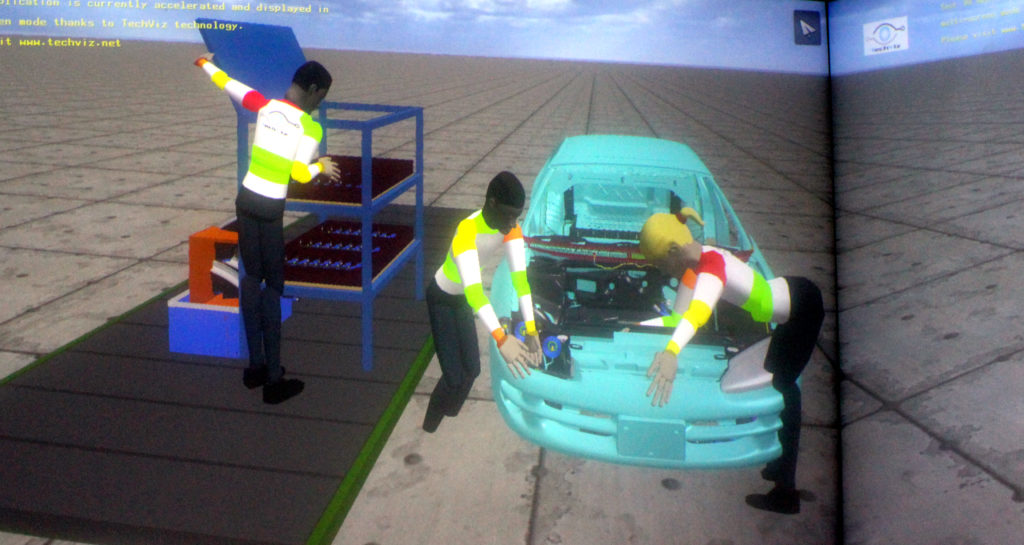

Use Case: Leveraging VR for Enhanced Ergonomics in Workstation Design and Cockpit Development with TechViz
Ergonomics plays a crucial role in designing efficient, comfortable, and safe workstations, whether in an industrial environment or in specialized settings like vehicle and aircraft cockpits. The traditional approach to ergonomics evaluation has relied on physical prototypes and iterative testing, which is costly, time-consuming, and limited in terms of adaptability to rapid design changes. Virtual Reality (VR) offers a modern solution, enabling designers and engineers to visualize and assess ergonomics in real-time during the design phase, significantly reducing development costs and accelerating time-to-market.

TechViz provides advanced VR solutions tailored for ergonomic evaluations, enabling organizations to perform detailed analyses of workstation layouts and vehicle cockpit designs. Using TechViz’s VR capabilities, users can visualize, interact with, and assess 3D digital models in a fully immersive environment, streamlining the process of ergonomic validation from the earliest stages of design.
Import 3D models into a VR environment, compatible with over 200 design applications such as Catia, Creo, and NX. This compatibility enables seamless integration with existing design software, allowing real-time visualization without needing additional file conversions.
By incorporating a Virtual Manikin that simulates a human operator, TechViz allows designers to evaluate human interactions with the workstation or cockpit. This feature lets teams simulate reachability, accessibility, and comfort, closely mirroring real-world conditions.
For cockpit designs, TechViz integrates tools such as finger tracking and haptic feedback to allow users to interact with elements like the dashboard or onboard computer in VR. This provides a more realistic sense of engagement, which is critical for assessing accessibility and ease of use for the driver or pilot.
Designers and engineers can conduct ergonomic reviews, test comfort levels, and make adjustments instantly in VR. This reduces the need for physical prototypes, cutting costs, and simplifying design iterations.
Improve workstation safety, comfort, and efficiency in confined spaces (e.g., assembly lines, control rooms).
Designers use TechViz’s VR system to evaluate potential ergonomic issues by viewing the digital twin of the workstation. Using the Virtual Manikin, they simulate how an operator would interact with the workstation, analyzing reachability, posture, and possible collisions with equipment.
Cost Reduction : Reduces the need for physical prototypes.
Enhanced Safety : Identifies potential ergonomic hazards early in the design process, allowing modifications to be made to enhance operator safety.
Compatibility :Integration with widely-used software like Catia, ensuring seamless data transfer.
Optimize the layout and usability of vehicle and aircraft cockpits to improve driver/pilot comfort and ensure adherence to safety regulations.
In VR, designers can assess the cockpit layout, examining driver/pilot reach, visibility, and the accessibility of controls. Finger tracking and vibro-tactile feedback allow for a realistic experience, enabling users to gauge ease of interaction with the control panel and other dashboard elements.
Faster Time-to-Market : Real-time adjustments in VR eliminate the need for multiple physical prototypes, which speeds up design finalization.
Enhanced Design Flexibility: Allows designers to quickly modify and personalize dashboard layouts, mirror placements, and control positioning.
Comprehensive Ergonomic Evaluation: VR-based reviews provide an immersive, full-scale understanding of ergonomic comfort and functionality before production.

TechViz’s VR solutions bring transformative value to ergonomic evaluations, offering companies an efficient, cost-effective, and realistic method to assess workstation and cockpit designs. By simulating real-world interactions and providing an immersive environment for design validation, TechViz enhances the ergonomic quality of products from the outset, helping organizations deliver safe, comfortable, and high-performing workspaces and vehicles.
TechViz allows ergonomic reviews to be conducted in real-time, offering a direct view into potential issues and enabling immediate feedback.
The reduction in physical prototypes translates into lower costs and faster design cycles, as design teams can quickly iterate and validate concepts virtually.
By identifying and mitigating ergonomic risks early in the design process, VR helps improve both safety and user satisfaction.